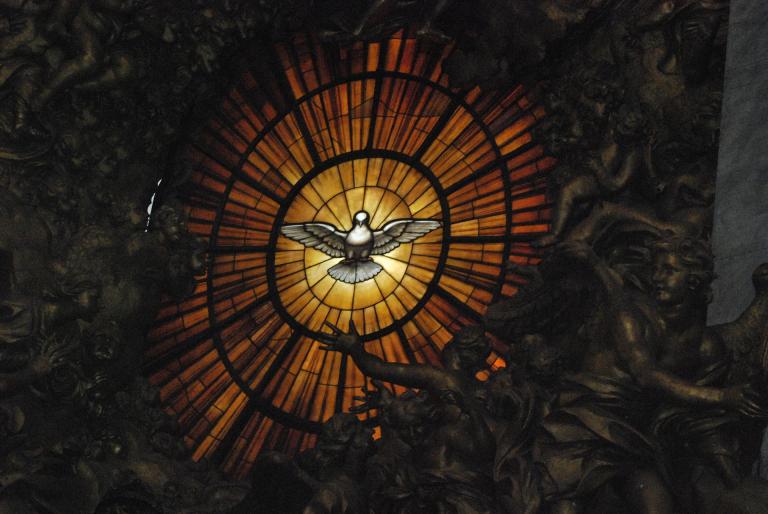Since Vatican II, there has been a great fear among orthodox Catholics that a focus on the sensus fidelium would lead to a collapse in the central authority of the Church. Doctrine would cease to be defined by Scripture, Tradition and the Magisterium and would instead be subject to the caprices of the popular vote.
This has in fact happened. But not in the way that people feared.
I wasn’t around for Vatican II, or in the years that immediately followed, so I can’t speak to the changes that swept through the laity at that time. I have been around for a more recent change, one that has been just as corrosive to the integrity of the Catholic faith.
It happened at about the time when print media started to decline, and publications moved on-line. Prior to that point, the criteria for getting an article published in any of the newspapers or magazines that prided themselves on fidelity to Church teaching was simple. You quoted from Scripture, Papal statements and Vatican documents to show that what you saying had a solid foundation and was consistent with Catholic tradition.
Editors were general happy to work with any material that was in-line with Catholic teaching, even if it addressed the aspects of doctrine that are often associated with the political left. In many cases, they were even willing to accept pieces that challenged their own preconceptions – provided you could demonstrate that they were consistent with orthodoxy.
That changed, quite rapidly, as publications began to move on-line. There was a shift in Catholic publishing that was very noticeable if you worked in the industry. Suddenly, editorial boards (and perhaps more importantly, marketing departments) could see which individual articles were having the most success. That is, which were getting clicks, and shares, and positive comments.
The goal of Catholic publishing changed as a result. Editors could no longer focus on putting together a paper or a magazine that would help Catholics to grow in all aspects of their faith, because people no longer read that way.
On the internet, people tend to read and share individual articles from a variety of sources, rather than reading a variety of articles from a single source. This means, in effect, that readers tend to camp out on particular issues that interest them, and that the market is more immediately responsive to the tastes and preferences of its readership.
I’m not saying that’s an entirely bad thing – just that it’s problematic if people are using on-line media as their primary source for adult faith-formation.
The practical consequence of a like-and-share market is that it puts pressure on Catholic publications to produce content that suits the prejudices of readers. In effect, it democratizes Catholic teaching – or rather, it democratizes what is being taught in practice.
Over a very short period of time, as on-line content started to take precedence over print, there was a noticeable change in the types of articles that were accepted and printed by most of the Catholic publications that claimed fidelity to the Magisterium. In many cases, there was an actual turn-over of editorial staff as the new standards were coming into effect.
It was no longer sufficient for a piece to reflect the teaching of the Church. At this point fidelity to Church teaching was still mostly expected, but articles that got accepted for publication tended to be those which presented aspects of Church teaching that confirmed the political biases of the readership.
Readers were increasingly intolerant of content that challenged them to explore aspects of the faith that didn’t dovetail neatly with American political categories. What had happened to liberal publications many years earlier (perhaps in the wake of Vatican II, or perhaps as a result of previous changes in the media environment), now happened to conservative publications. The agenda no longer primarily served Rome, but Washington.
This has meant that slowly, over the course of several years, “orthodox” publications have moved from preferring material which highlights the more conservative aspects of the faith to printing material that, in many cases, outright attacks the faith in the name of right-wing dogma. The vicious hatred of Pope Francis is largely a product of this populist Catholic culture.
Nor is it just a matter of what is published on-line. As people increasingly turn to social media in order to seek Catholic community, the media environment has become a primary nexus of faith-formation. Even when Catholics get together face-to-face, it’s normal for discussions to feature the ideas, and often the names, of prominent Catholic media figures. Even homilies, which should serve to assert the faith over the din of populist internet chatter, are often influenced by what our Priests are reading on FaceBook.
This has led, I would argue, to a crisis of catechesis every bit as serious as the crisis that followed the sexual revolution. Increasingly, Catholics who pride themselves on their faithfulness to Catholic teaching are completely ignorant of what the Church actually teaches concerning social justice, economics, immigration, environmental responsibility, and many other issues where Catholic Tradition indicts the policies of the American Republican party.
Pope Francis is thus seen as a heretic, a liberal, and a socialist when he asserts points of doctrine that have been part of Magisterial teaching for decades, centuries, millennia. The problem is not that the Pope has suddenly departed from the timeless teaching of the Church. Rather, the problem is that Catholic culture, at least in America, has abandoned the more unpopular aspects of that teaching in favour of a more politically acceptable narrative that brings in the clicks.
Image courtesy of Pixabay
Stay in touch! Like Catholic Authenticity on Facebook:
















